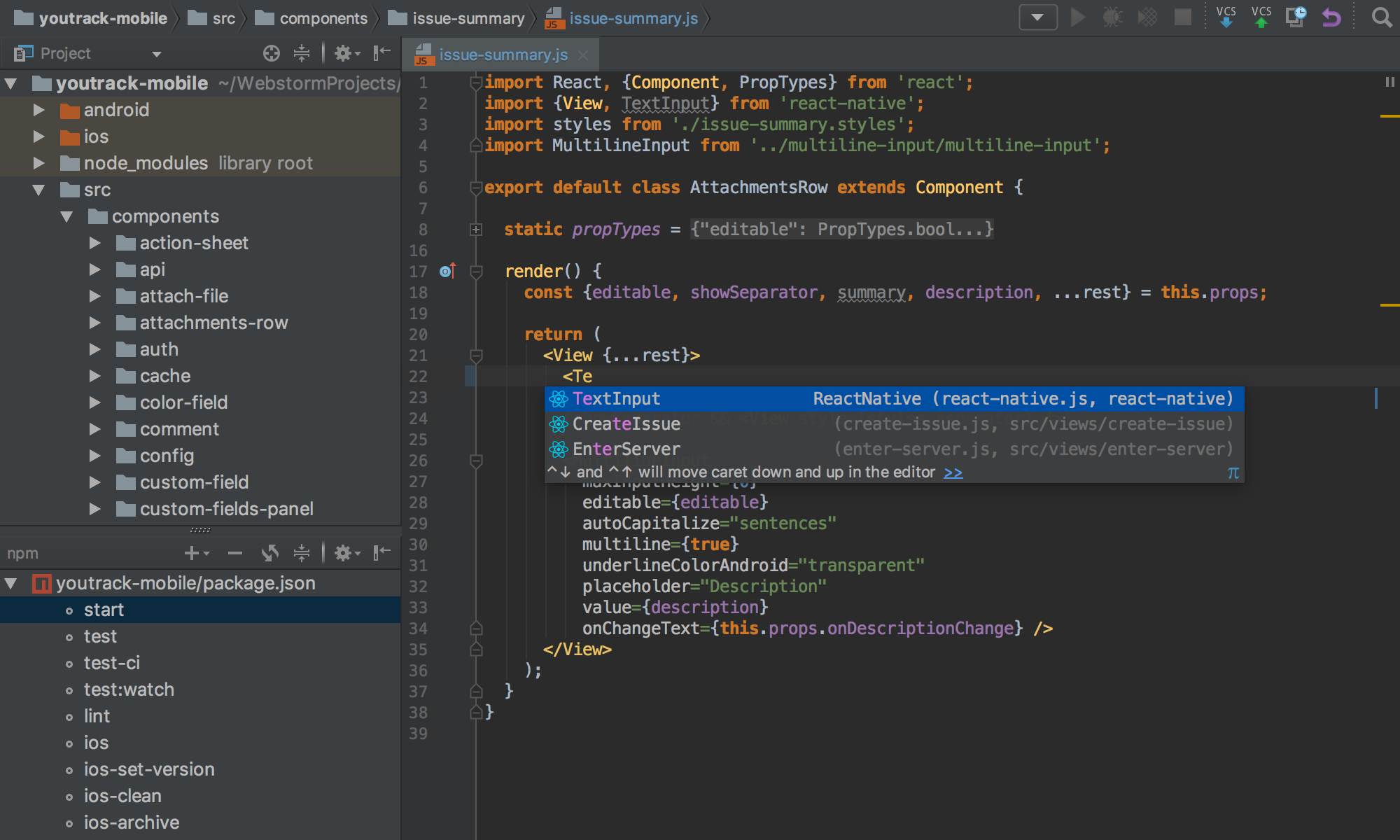

- Webstorm debug electron how to#
- Webstorm debug electron mac osx#
- Webstorm debug electron update#
- Webstorm debug electron code#
- Webstorm debug electron windows#
One of the biggest new features in WebStorm 12 EAP is that you can now run and debug your Node.js apps on a remote server or Vagrant box right from the IDE. Press Alt-Enter or just start typing to get a list of all properties and their available options.
Webstorm debug electron code#
WebStorm now provides smarter code completion based on JSON Schemas in tsconfig.json.
Webstorm debug electron windows#
With the updated Related symbols… action ( Cmd-Ctrl-↑ on OS X, Ctrl+Alt+Home on Windows and Linux), you can see the list of imported symbols and jump to their definitions. Import statements in JavaScript and TypeScript files are now folded by default. Or you can remove each unused import individually using a quick-fix – just press Alt-Enter on the highlighted import. With Optimize imports ( Ctrl-Alt-O) (which now also works in JavaScript files), you can get rid of any unused imports and merge multiple import statements for symbols from one module. WebStorm will now highlight any unused ES6 imports in JavaScript and TypeScript files.
Webstorm debug electron update#
There we go! “po” stands for “print object”.A new WebStorm 12 EAP build is now available! The highlights of this update include: running and debugging Node.js apps remotely from the IDE, unused import warning for JavaScript and TypeScript, more improvements in Angular 2 support, and more.Īs always, you can download it here or, if you have a previous EAP build (144.2925) installed, you should soon get a notification in the IDE about a patch update. NSDeviceColorSpaceName = NSCalibratedRGBColorSpace What if we want to inspect the value of some more complicated data structures? Let’s see what that screenDescription variable is all about on line 26. We could even modify the value of it using the expression command. We can run print $0 to output it again if we wanted. LLDB seems to be similar to Chrome dev tools in this regard - you have access to everything in the current scope’s state. > 26 NSDictionary *screenDescription = Ģ7 NSNumber *displayID = int screenId = įrom here, we can inspect the value of variables that are within the current scope or closure. LLDB will tell you the process launched and will give you a little snippet of your code and where it stopped: 23 24 bool isMain = isMainScreen(screens) LLDB will tell you something like “Breakpoint 1: no locations (pending).”. Now, let’s say we want to set a breakpoint on line 25 of DesktopBg.mm so we can check the value of isMain during each for-loop iteration. We still haven’t run any code yet though. LLDB will start saying that it’s current target is set to node. Now, run: lldb - your/path/to/ node test.jsīe sure to pass whatever node.js file you want to pass the node.js process. We need to know the absolute path to the node executable.

Let’s do it step-by-stepįirst, you need to do a debug build of your module. I know, native node addon land is crazy). NS* prefixed types are all Objective-C data structures. (Quick note on that module: It’s was my first attempt at a native module and it’s probably not very good. For some realism, let’s pretend we’re trying to debug this excellent and highly useful native node addon, node-desktop-bg. LLDB gives us an interactive shell where can set breakpoints, inspect values, modify values, and more. We’ll run node.js and pass it a JS file from within LLDB. This is what Xcode uses underneath the hood in it’s integrated debugger.
Webstorm debug electron mac osx#
Mac OSX comes with a built-in command line tool called LLDB that we can use.
Webstorm debug electron how to#
I’m a native node addon and C++ beginner myself, so I recently had to learn this myself and I was a little disappointed that there weren’t many resources on how to do this. But what if you want to inspect what’s going on in your native C++ code? Debugging the JS is easy - you can use WebStorm’s built-in debugger (my preferred method), node-debug, iron-node, or others.

So you’ve got a native node.js addon written in C, C++, Objective-C, C, or something else.


 0 kommentar(er)
0 kommentar(er)
